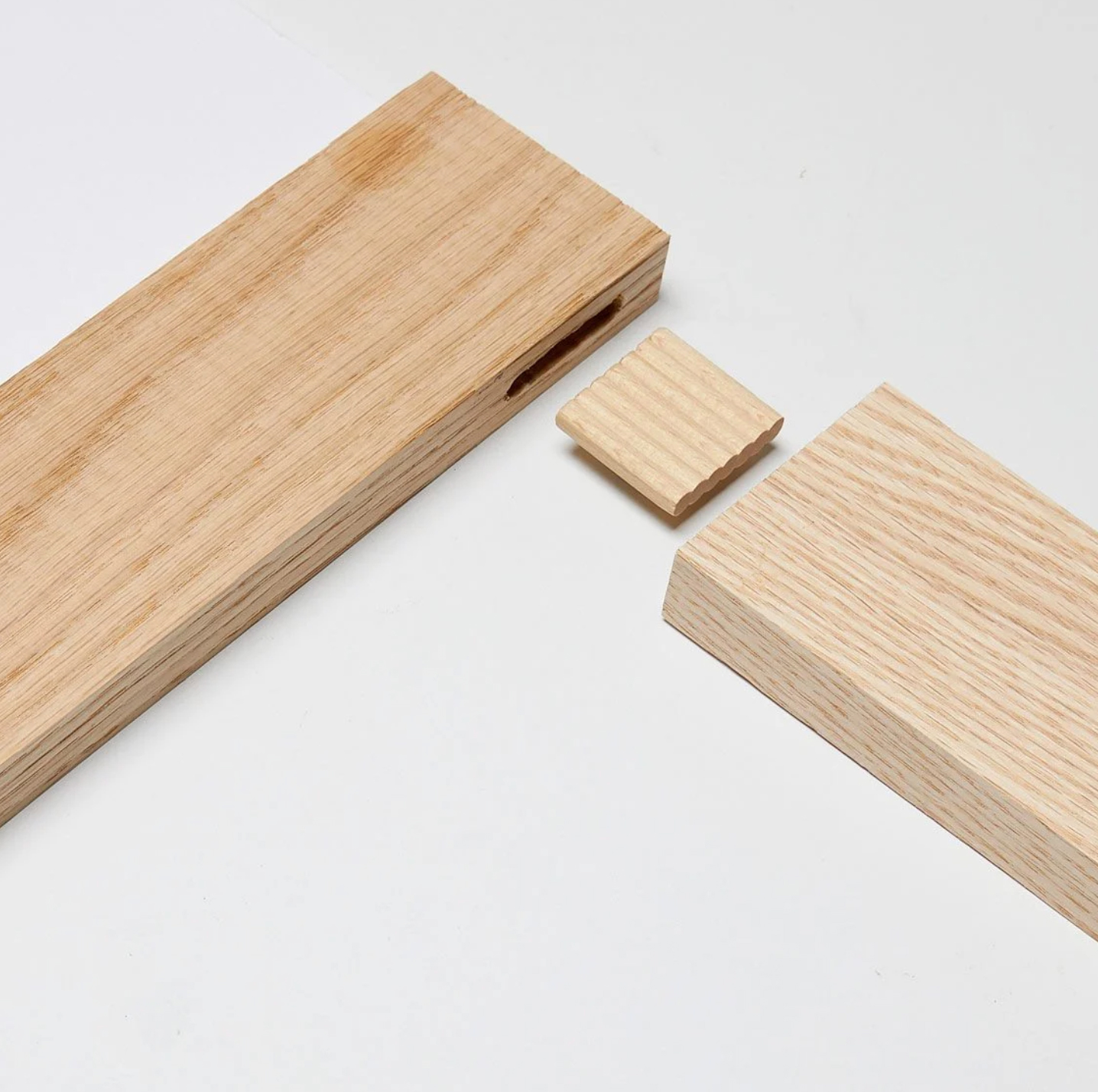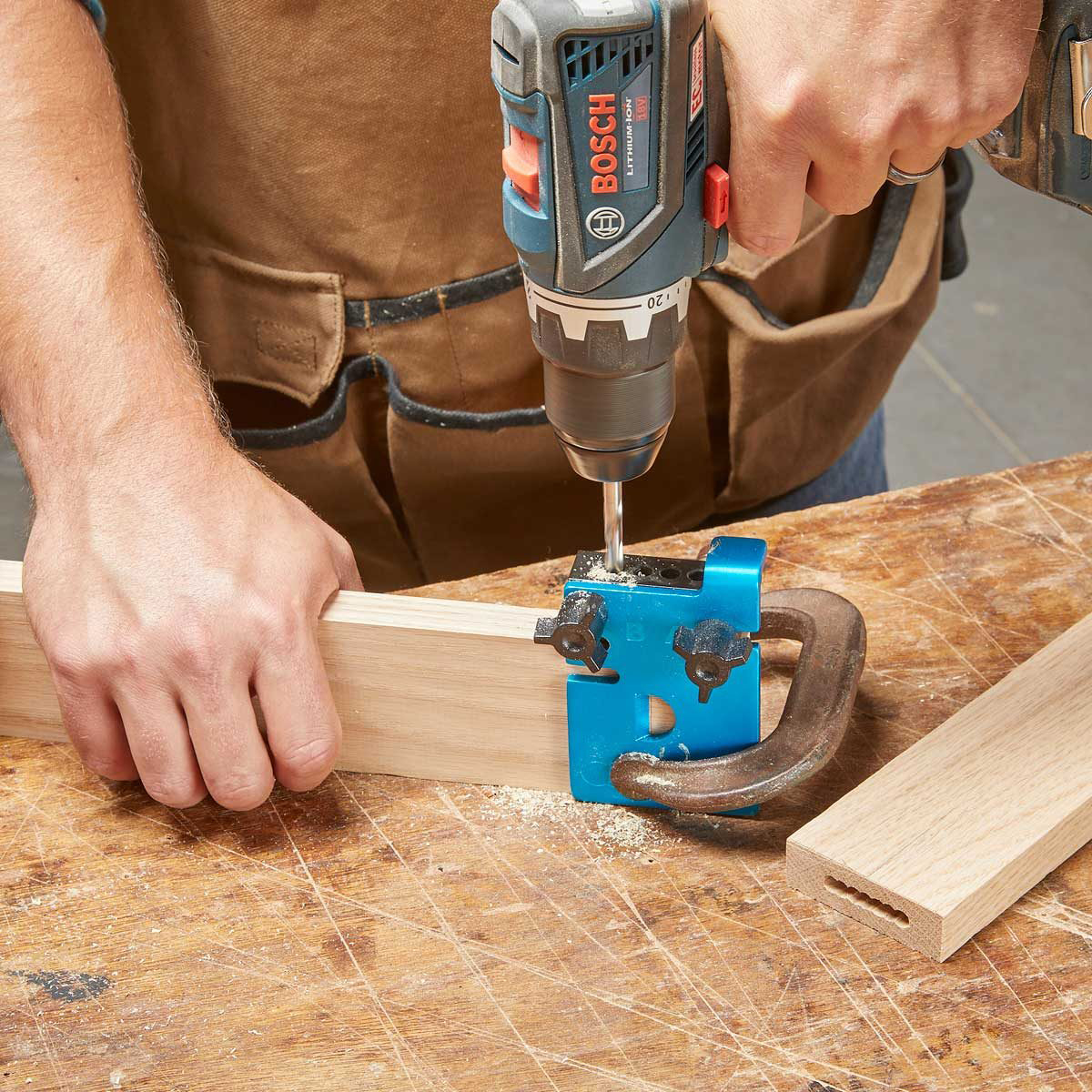4. BeadLock

A BeadLock jig facilitates drilling mortises in adjoining parts, again using only a drill. The basic kit is around $90. This is one of many “loose tenon” systems. Instead of the tenon being cut from one of the adjoining parts, precut tenon stock is glued into a mortise in both parts. BeadLock mortises are just a series of overlapping holes, and the tenon stock looks like a stack of dowels. You can buy tenon stock, or you can buy router bits to make your own tenon stock as needed. But you’ll need a router table for that, and it’s a bit fussy.
Pros
Easy to use
Positive alignment in both directions
Cons
Slow
Requires clamping
Sawdust sticks in the holes
Jig is not self clamping
How it’s done

Mark the joint centre line on both parts, position the jig using its alignment guide and then clamp the jig in place. Drill the first set of holes, slide the drilling block to its second position and drill the second set of holes. Repeat the process on the mating part.
Add glue and insert the tenon

Apply glue to the mating parts and the BeadLock tenon. Press the joint together and clamp.



